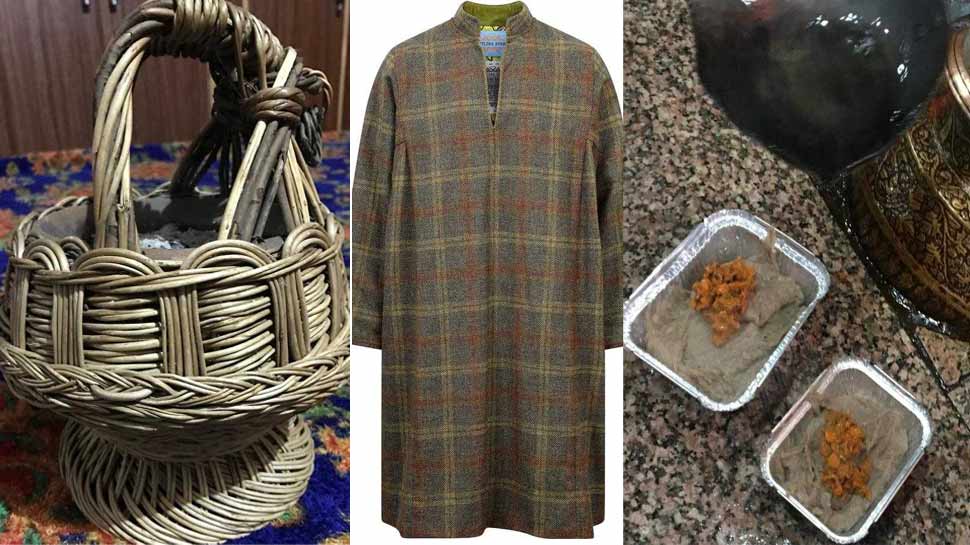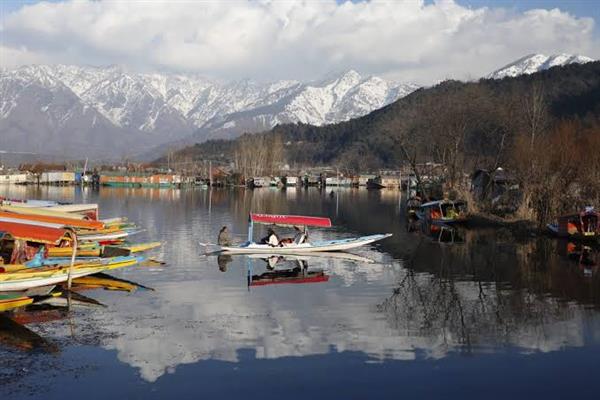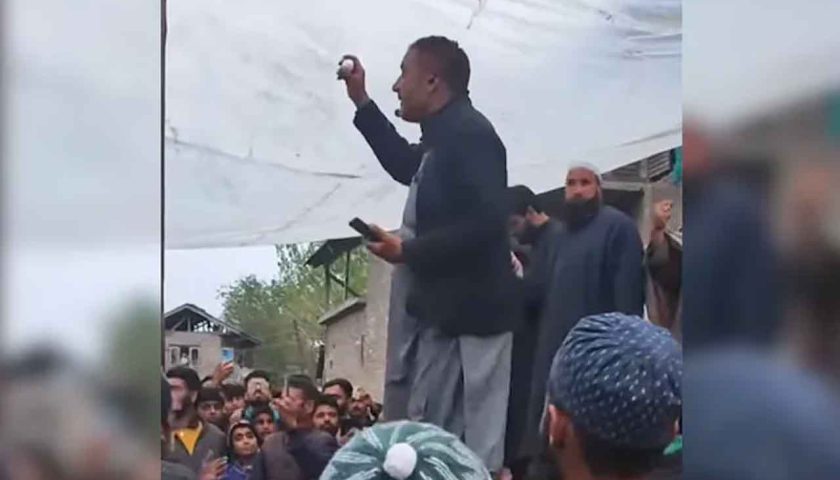At 7.30 am on a snowy December day, Peer Murtaza and two friends join the crowd at Dilshad Restaurant to relish a plate of harisa, a traditional Kashmiri winter breakfast dish.
Most tables are taken but the trio find some space, squeeze in and order three plates of the thick meat stew.
Kashmir’s long chill stretches from the onset of autumn in September all the way to April, and at their lowest, temperatures can dip to minus 4 degrees Celsius.
Every morning during these months, the Dilshad Restaurant — a 71-year-old establishment near Srinagar’s commercial hub of Lal Chowk — serves hundreds. And the only item on their menu is harissa — which, incidentally, is believed to have its origins in central Asia.
A small plate costs Rs 50, a large serving, double that; and each helping comes with complimentary Kashmiri rotis.
“Every winter, my friends and I have harisa at least once or twice a week, for breakfast. It keeps the body warm in the sub-zero temperatures,” says Murtaza, 27, a dry fruit and saffron trader, as he dip his roti into the steaming stew.
Have a plate and you will be warm throughout the day, adds Sibtain Hussain, whose father Naseer Ahmed owns the eatery.
Hussain explains that preparation of a day’s servings of harisa at the restaurant is an 18-hour process that begins at 11am the previous day.
First, rice is mashed to a watery paste. Then the meat and a combination of spices mixed in. The mix is left in a closed vessel over a fire, overnight, to be opened only at 3am, when it is further mashed until it is a fine paste again.
Above the restaurant is a kitchen straight out of the last century. An elevated rectangular platform holds four large vessels; logs crackle and burn below it.
“We use about 25 kg of meat a day,” says Manzoor Ahmed, 20, one of the cooks at Dilshad. “The final stage of mashing — from 3am to say 5.30am — is the most crucial part. The paste should be very fine.”
Each plate of harissa is garnished with a pour of boiling mustard oil and pieces of kebab and minced meat. Murtaza’s friend Mubashir Farooq, 20, a student, swallows a mouthful and grins, “Without harissa, the Kashmiri winter is incomplete.”
Turning it up
The other two elements without which winter is incomplete — and would be unbearable — for Kashmiris is the traditional overcoat or pheran, and the kangri or firepot held underneath it.
Worn by men and women, the pheran is quintessential Kashmiri winter attire, though its design is undergoing transformations to make it more fashionable, and enable it to be worn outside the home and in the office.
“The traditional style of the pheran is loose — you can keep a kangri inside it. The modern style is to make it fitted and give it a formal appearance. And a third style has the collar of a fitting pheran resembles that of an overcoat,” says Irfan Jeelani, the fourth-generation proprietor of Subhana Tailors, a 173-year-old tailoring establishment that is one of the oldest and most prominent in Srinagar.
The pheran is so very warm because it is made of pure wool, lined with a thick layer of cloth, and falls to the knees. “It is the best dress for the minus degrees in Kashmir,” says Jeelani.
The cost of a pheran at Subhana Tailors ranges between Rs 4,000 and Rs 12,000, though you can get a decent readymade one for as little as Rs 1,500 in the shops at Lal Chowk.
Kashmiri politicians – including chief minister Mehbooba Mufti and National Conference leader Omar Abdullah – often wear pherans at public rallies. As do separatist leaders like Mirwaiz Umar Farooq. Though jackets and blazers are preferred for formal occasions, the pheran is also increasingly making it into the workplace.
“A pheran gives me complete protection from the cold. It’s the most comfortable winter dress for me,” says Andleeb Saqi, a humanitarian aid worker. “A nicely made fitted one can be worn for all professional purposes in winter.”
So integral is the pheran to Kashmiri identity that, in February 2014, an army invitation asking Kashmiri journalists to refrain from wearing the garment to a press briefing triggered outrage and had to be revoked.
Even then chief minister Abdullah had tweeted, “If the army has in fact told journalists not to wear a pheran to Corps HQ events that is unacceptable & the order should be withdrawn. People wear their pheran with pride. It’s part of our identity aside from the best way to stay warm in the cold. Can’t ban pherans.”
The kangri – the age-old earthen pot carrying embers, held in a beautiful wicker case – has also survived the test of time in Kashmir, mainly because of the many, acute power cuts.
A mixture of embers and sawdust produces the heat in a kangri, making it a most economical source of heat. You can buy one for just Rs 200. “I sell about 15 to 20 pieces a day in the early days of winter,” says Sajad Dar, 18, who sells kangris on the streets of Srinagar.
Syed Shuja, 35, a government employee, says by the time he returns home from work every day, his mother has prepared a kangri for each member of the family. “I freshen up and change into a pheran and keep the kangri inside it until bedtime. After that, it’s blankets, blankets, warmth and sleep.”
For more information about Kashmiri Products or placing online orders, you can visit Kashmir Store Or Kashmir Bazar






